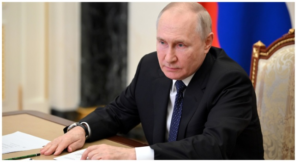
China’s crude oil imports from top exporter Saudi Arabia are expected to remain depressed through the third quarter, analysts said, after its customs office reported inbound shipments from the kingdom fell to their lowest in 13 months in July.
Chinese crude imports from both Russia and Saudi Arabia have dropped with the output cuts made by members of the Organization of the Petroleum Exporting Countries (OPEC) and its allies, a group know as OPEC+. Saudi Arabia has in addition volunteered to cut output by another 1 million barrels per day (bpd) from July through September.
Imports from Saudi Arabia in July came in at 5.65 million metric tons, or 1.33 million bpd, the lowest since June 2022, China customs data showed on Sunday. July’s Saudi imports slipped 31% from June and are down 14% from a year earlier.
“We expect Chinese imports of Saudi crude will maintain a slight downward trend in the third quarter this year,” said Xi Jiarui, a crude oil analyst at China-based commodities consultancy JLC.
Oil imports from Russia, a member of OPEC+ and China’s largest supplier this year, fell around 26% month-on-month in July to 1.9 million bpd as sanctions-imposed discounts on ESPO grade crude have been steadily eroded by rising Indian and Russian domestic demand.
Moscow has also pledged to cut exports by 500,000 bpd in August to cater to stronger domestic refining demand.
Facing higher prices from top suppliers Saudi Arabia and Russia, China – the world’s biggest crude importer – has been looking to smaller suppliers such as Brazil and Iran to secure cheaper shipments, while also drawing down record inventories.
Saudi Arabia raised the official selling price (OSP) for its flagship Arab Light grade to a six-month high in July and has hiked prices for August and September. Riyadh’s output has fallen to around 9 million bpd on the OPEC+ cuts.
Analytics firm Vortexa forecasts Saudi crude loading for China in August at 1.6 million to 1.7 million bpd. That compares with 1.99 million bpd in August 2022, and an average 1.87 million bpd through the first half of 2023.
“I won’t be surprised if Saudi-China volumes decline for 1 or 2 months … (but) being the top partner mutually and with the new term supply agreement this year, the two will stabilize volumes in (the) long term,” said Emma Li, a China oil markets analyst at Vortexa in Singapore.
The dip in Saudi and Russian shipments has created an opening for other suppliers.
Brazil’s shipments to China last month surged 167% year-on-year to 650,000 bpd, with Chinese refiners booking more than 1 million bpd to arrive in August.
Similarly, imports from Angola grew 27% from the previous month to 574,581 bpd in July.
“Iran is increasing its crude oil exports and has a huge price advantage … Going forward, China’s crude imports may be more inclined to Iranian crude oil, thereby dividing the share of Saudi Arabia’s imported crude,” JLC’s Xi said.




